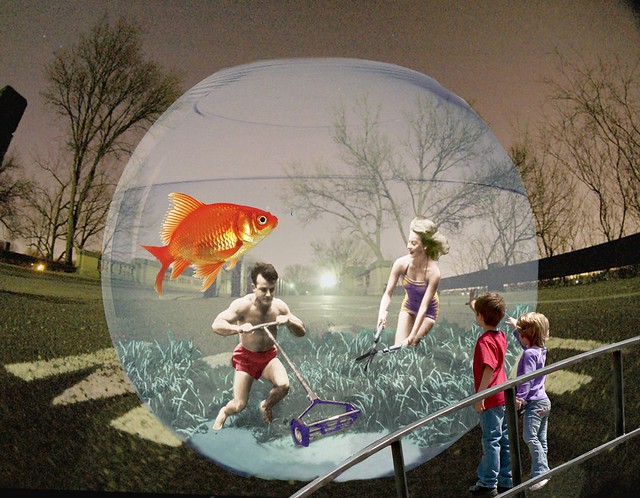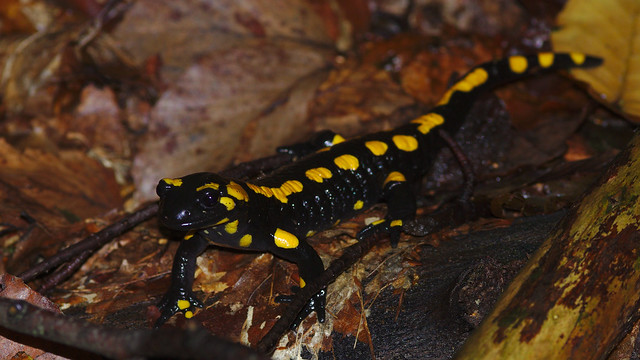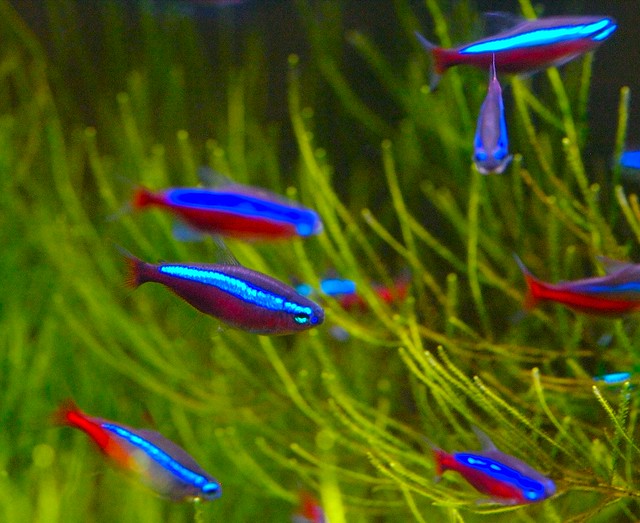 |
| Attribution: Randall JE This work is licensed under the Creative Commons Attribution License. Photo: Aquariumwiki |
These fish received their names from their distinctive color pallets. They have black bodies just like a domino. There are three large white spots their bodies, one on each side and one on their forehead. They are also called threespot dascyllus and domino damsels. They commonly grow to as long as 5 inches in length and have a life expectancy of up to 10 years in captivity. These fish can swim in depths up to 200 feet.
This is one tough and highly adaptable little fish. They can tolerate conditions that would kill a less hardy species. This capability of surviving adverse environmental conditions has led to them being a popular biological stabilizer for aquarists who are cycling a new tank. If the damselfish lives it is OK to risk introducing more expensive and temperamental species to the new aquarium.
This is not a timid creature by any means. They have a propensity to be downright tenacious for a fish of their stature. The level of aggressiveness increases as they mature. Housing them with smaller and more docile species may prove problematic. They will also exhibit territorial behavior toward members of their own species, especially in smaller aquariums. Suitable tank-mates include dwarf angelfish, puffers, and cardinalfish.
A common trait among damselfish is their symbiotic relationship with sea anemones. They are commonly referred to as anemonefish because of this inherent mutualism. Sea anemones exude neurotoxins which can be deadly to most other fish. Damselfish have a natural immunity to these toxins which inevitably leads to mutually beneficial coop between the two species. Dominoes feed on the semi-digested matter left floating around the anomie because of its dietary habits and remove harmful parasites from the creature. There is the additional benefit of being able to seek shelter within the tentacles of a species even the most aggressive of predators will instinctively steer clear of. In return for shelter and provisions, Dominoes excrete fecal matter which is a source of nutrition for the anomie. Dominoes also associate with Diadema sea urchins and branching coral.
This is an omnivorous species. Part of their diet in the wild consists of ingesting various species of algae. It is recommended that you provide them with an abundance of live rock to graze on. The live rock will provide them with both the plant matter necessary for their nutritional requirements and make for an acceptable hiding place in the absence of their symbiotic partners.
In addition to plant matter, they can be fed brine shrimp, chopped fresh shrimp. mollusks, or squid. They will also eat marine flakes for omnivores.
Like their relatives the clownfish, dominoes are sequential hermaphrodites. They are all born as males. If you place two males in an aquarium together the larger more dominant fish will undergo a gender change. This species has been known to breed in captivity.
Technological advancements in the aquarium industry continually redefine the concept of "home aquarium ownership." Just twenty years ago not even the biggest public aquarium was capable of keeping jellyfish alive in captivity. Now they make desktop Jellyfish Fish Tank Aquariums. And why would you want a jellyfish tank? Perhaps you should check out what the translucent bodies of Pet Moon Jellyfish look like under LED lighting. Pet Jellyfish give a whole new meaning to the term exotic pets.
Article Source: EzineArticles |






